First in, last out
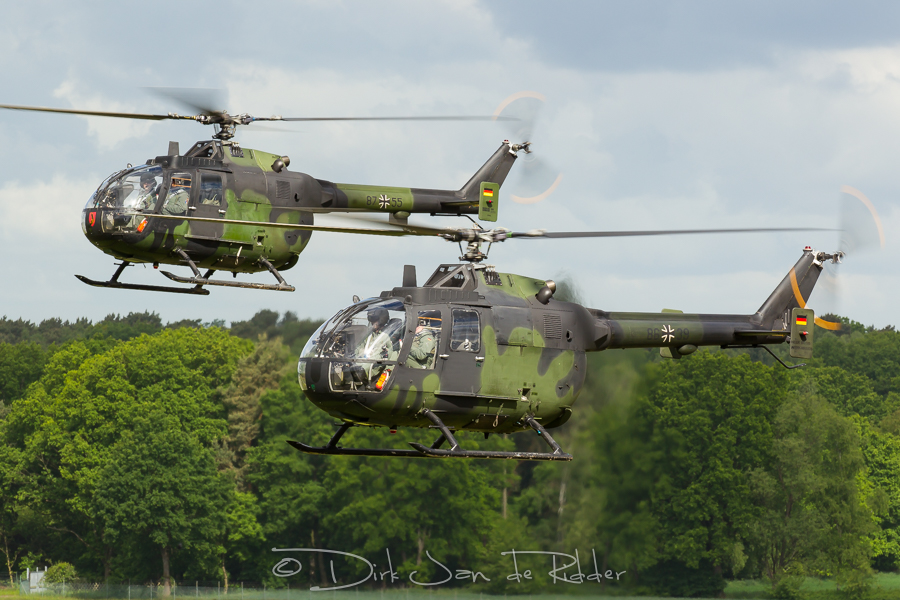
I recently visited Army Aviation Base Celle, where the MBB Bo105 ‘Bölkow’ helicopter will retire at the end of 2016 after being introduced into German Army service there in 1973.
For over 40 years, the Messerschmitt-Bölkow-Blohm Bo105 was the workhorse of the Heeresflieger (German Army Aviation), carrying out anti-tank attack, pilot training and utility roles. At the height of the Cold War the Heeresflieger operated 100 Bo105Ms for reconnaissance and liaison as well as 212 Bo105P anti-tank helicopters. In its operational roles it has been replaced by other helicopters and pilot training is currently the Bo105’s primary task.
Celle has been home to the Bo105 since 1973. Initially just operating the Bo105M utility variant, Heeresfliegerregiment 16 (Army Aviation Regiment 16) became the first regiment equipped with Bo105P anti-tank helicopters in 1980. HFR 16 was disbanded in 2002, but Bo105s remained at Celle for liaison duties and pilot training. Currently, the base is home to Ausbildungszentrum C (Training Center C), part of the Heeresfliegerwaffenschule (German School of Army Aviation). It is equipped with around 40 Bo105s and a similar amount in storage awaiting being sold or scrapped for spare parts.
The Bo105 is still flown in three variants with small differences, all of which can be flown by any pilot or student. A small handful of Bo105P attack helicopters with missile launcher racks are still flying. They are approximately 150kg heavier because of the antitank equipment. The Bo105P1, a Bo105P with with the missile launcher racks removed, is the most numerous helicopter in the inventory. The Bo105P1M is stripped even further from unnecessary parts and equipment to allow it to carry out flights with external cargo.
The airframes have between 4400 and 6200 flight hours, which isn’t excessively much. The unit’s main mission nowadays, one of the flight instructors jokingly said, is transporting generals around Germany. Every day one of their helicopters is ‘on the road’ for this reason, often on multiple-day trips to southern Germany. But these same generals who decided to retire the Bo105, despite Airbus Helicopters offering to support the Bo105 for another ten years, will be left without air transport when the Bo105 leaves service next year.
No helicopter in the German armed forces will take over the VIP transport role, since no helicopter can compete with the Bo105’s cost per flight hour of around 1,000 euro. For 2015 5,500 Bo105 flight hours are planned, still making Ausbildungszentrum C the busiest Heeresflieger flying unit.
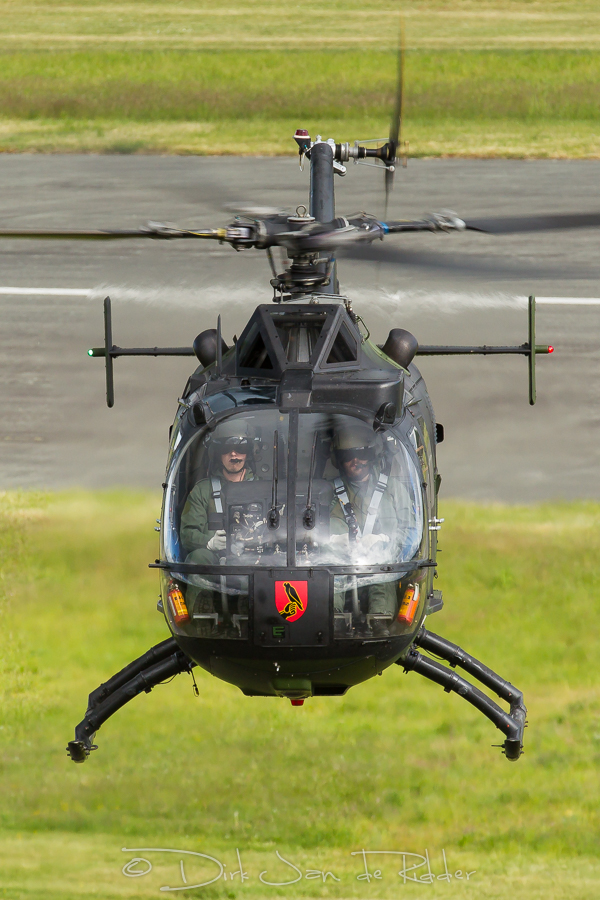
Student pilots come to Celle for training on the Bo105 after eight months of VFR flights and another four months of IFR flying, both of which on the Eurocopter EC135 at Bückeburg. Although the EC135 is fully up to modern standards with digital cockpits, autopilot and a flight management system, there is one aspect of training for which the Bo105 is better suited: practicing autorotations to the ground.
Students only fly the Bo105 for eight flying hours, which usually takes around a week. Captain Olaf Langanki, an experienced Bo105 instructor pilot, explains: “Students coming from Bückeburg don’t get a new Bo105 licence anymore. During their training for their helicopter pilot licence, they come here for eight hours of autorotation because there are some issues with the EC135. It is possible to do an autorotation [in the EC135], but if you perform it too often that will damage the aircraft. The Bo105 is similar to the EC135, so they send the students here for one week. They don’t have to learn a lot about the Bo105.”
“It is me [the instructor] preparing everything, sitting beside them and starting the engine. They only have to taxi out and perform the autorotation landings. Because these aircraft are so similar, I just tell the students to take the helicopter up and they immediately pick it up. There are some small differences in the pedal movements, because the Bo105 is a bit quicker with the reaction of your pedal inputs, but it works fine.”
The process of performing an autorotation is pretty straightforward, but there are a number of flight profiles in which students have to become proficient, as captain Langanki explains: “What I do is I take the throttles to idle and then they have to do the autorotation. I can only say things like ‘get the nose a little bit up’, ‘pull the pitch’, but I’m not allowed to touch the controls.”
“A normal autorotation is a straight-in autorotation. Our normal flight altitude is 500 feet above the ground with 100 knots. We put the engines to idle and autorotate straight in. You can also do it low level at an altitude of between 30 to 100 feet in which case you only have to pull up the nose and autorotate. Then we’ve got a single-engine autorotation, which is nearly a normal landing. Lastly, we also perform autorotation in curves.”
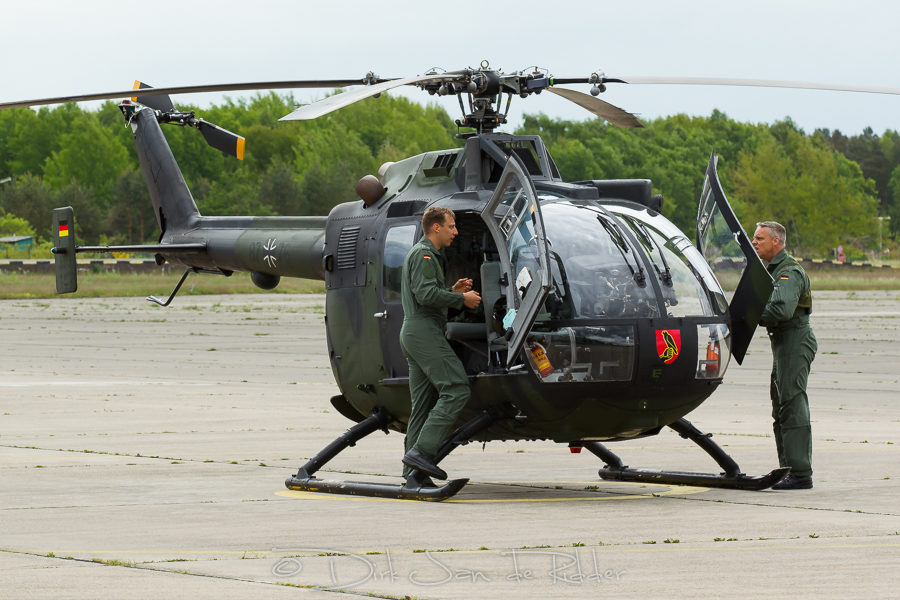
MoD plans call for the Bo105 to be retired on 31 December 2016. Many a Bo105 flight instructor, whether young or old, faces an uncertain future. The amount of pilots in the German Army has already been reduced from 900 to 550 in recent years, and another reduction to 400 is coming up soon. Some of the older instructors are hoping for the Army to buy EC135s to replace the UH-1 Iroquois in the search and rescue role, which is currently under consideration. This would be a role they would easily convert to since it only requires daytime VFR flights.
Those not being so lucky to get a flying position fear getting a desk job or if they are ‘lucky’ a job as a fixed training device instructor at Bückeburg. All of Celle’s units will cease to exist or be relocated to other bases, as the base will house a regional medical treatment facility, a non-commissioned officer candidate battalion and an air manoeuvre training centre.
It remains unclear which helicopter will take over the role of autorotation training. The German Army is thinking about basing an additional helicopter type at Bückeburg besides the EC135. The EC120 Colibri might be a good candidate according to pilots at Celle.
What was once a revolutionary new helicopter has become outdated for combat, although it is still very much loved by its pilots. Keeping the Bo105 in service just for pilot training is considered not cost effective. Former German Army Bölkows will continue to serve with the Albanian Air Force, Lesotho Defence Force and Uruguayan Navy, but their service life in Germany will soon be over.

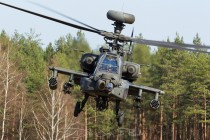
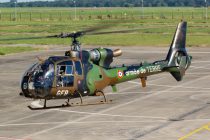
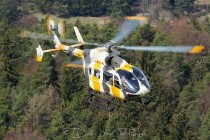

Comments are closed.